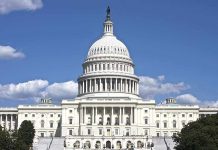
The tragic deaths of more than 20 Indian children—poisoned by cough syrup meant to heal them—expose a troubling truth: a world-class pharmaceutical industry is failing its most vulnerable, again and again.
Story Snapshot
- Over 20 children in India have died after consuming cough syrups contaminated with industrial chemicals diethylene glycol and ethylene glycol, which are known to be toxic to humans.
- These deaths are not isolated; they echo a pattern of similar incidents in India and abroad, including a 2022 case where Indian-made syrups killed nearly 70 children in The Gambia.
- India’s pharmaceutical sector, a global powerhouse, faces mounting scrutiny over lax regulation, quality control failures, and the recurring presence of deadly contaminants in medicines.
- Government regulators, manufacturers, and global health bodies are under pressure to explain systemic lapses and prevent future tragedies.
How Did This Happen—Again?
Cough syrups marketed as safe for children contained industrial solvents—diethylene glycol and ethylene glycol—chemicals never meant for human consumption. These substances, used in antifreeze and brake fluid, cause kidney failure, neurological damage, and death when ingested. The affected children, mostly under five, suffered acute symptoms before dying, leaving families devastated and communities in shock. The syrups in question were produced by Indian manufacturers, some with previous regulatory run-ins, yet remained on the market until tragedy struck.
This is not India’s first pharmaceutical scandal. In 1937, a U.S. incident involving a sulfa drug mixed with diethylene glycol killed over 100 people, leading to the creation of the Food and Drug Administration. History repeated in Panama in 2006, in Nigeria in 2009, and now, persistently, in India. Each time, the root cause is the same: substitution of pharmaceutical-grade ingredients with cheap, toxic alternatives—a cost-cutting measure with lethal consequences.
Who Bears Responsibility?
The Indian government, through its Central Drugs Standard Control Organization (CDSCO) and state drug controllers, is responsible for ensuring drug safety. Yet, regulatory gaps, understaffed inspection teams, and a fragmented oversight system have allowed substandard and falsified medicines to reach the market. Manufacturers, including firms like Kayson Pharma and Norris Medicines Ltd., are accused of negligence—either failing to test raw materials or ignoring safety protocols. Meanwhile, the World Health Organization (WHO) has issued global alerts, but its warnings often come only after children die.
Families of the victims demand accountability, but legal proceedings are slow, and compensation is rare. The political response has been reactive—bans on specific batches, suspensions of manufacturing licenses, and promises of reform. Critics argue these measures are too little, too late, and fail to address the systemic rot enabling such tragedies.
Systemic Failure or Isolated Incident?
Experts within and outside India agree: these deaths are symptoms of a broken system. India’s pharmaceutical industry, valued at over $50 billion, is the world’s largest producer of generic drugs. Exporting to more than 200 countries, it is a pillar of the national economy. But rapid growth has outpaced regulatory capacity. Smaller, less scrupulous manufacturers cut corners to compete on price, gambling with lives. The government, torn between promoting industry growth and protecting public health, has often favored the former.
Academics and industry veterans point to a lack of transparency, weak enforcement, and a culture of impunity. Some suggest that the drive for affordable medicines—a commendable goal—has inadvertently created a race to the bottom on quality. Others highlight the role of corruption and the revolving door between regulators and industry. The result is a market flooded with medicines of dubious quality, and a regulatory framework that reacts to crises rather than preventing them.
Global Ramifications
India’s reputation as the “pharmacy of the world” is at risk. After the Gambia deaths, several African nations temporarily banned Indian-made cough syrups. The U.S. and EU have increased scrutiny of Indian imports. If trust erodes further, the economic fallout could be severe, costing jobs and export revenue. Domestically, public confidence in the healthcare system is shaken. Parents, already wary of counterfeit drugs, now question even branded medicines.
The social impact is profound. Grieving families face not only the loss of a child but also the daunting prospect of seeking justice in a system stacked against them. Politically, the issue has become a lightning rod, with opposition parties and activists accusing the government of negligence and collusion with industry. The media, both domestic and international, has kept the spotlight on the crisis, ensuring it remains a live issue.
Looking Ahead
The cough syrup deaths are a wake-up call. They reveal the human cost of regulatory failure and the limits of trust in a globalized pharmaceutical supply chain. For India, the path forward is clear: rebuild public trust through rigorous oversight, hold wrongdoers accountable, and ensure that the medicines meant to heal do not kill. For the world, the lesson is equally stark: vigilance is the price of safety, and complacency is a luxury no nation can afford.
Sources:
Contaminated cough syrup in India – The Economic Times
India-made cough syrups contained toxins linked to 141 children’s deaths – The Times of India
Unraveling India’s Cough Syrup Death Crisis – Medical Tourism Magazine
More than 20 kids in India have died from contaminated cough syrup. Who’s to blame? – WGBH



